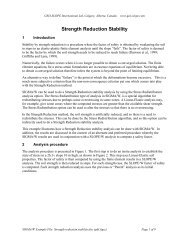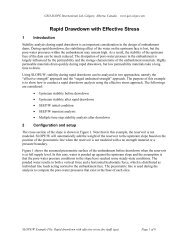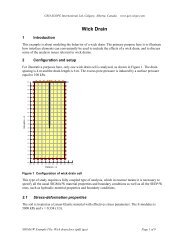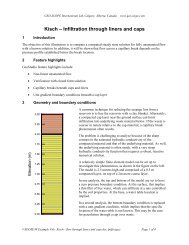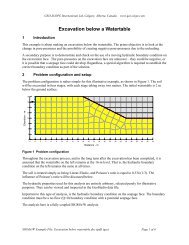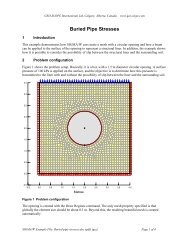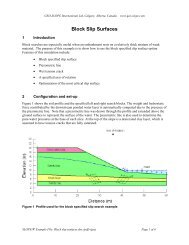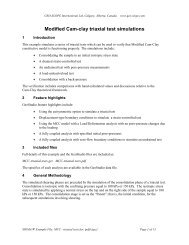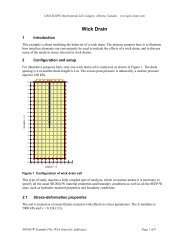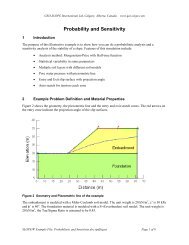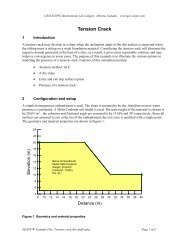Seepage Modeling with SEEP/W - GeoStudio 2007 version 7.22
Seepage Modeling with SEEP/W - GeoStudio 2007 version 7.22
Seepage Modeling with SEEP/W - GeoStudio 2007 version 7.22
You also want an ePaper? Increase the reach of your titles
YUMPU automatically turns print PDFs into web optimized ePapers that Google loves.
Chapter 2: Numerical <strong>Modeling</strong><br />
<strong>SEEP</strong>/W<br />
Ground<br />
profile<br />
Empiricism,<br />
Precedent<br />
Soil<br />
behaviour<br />
<strong>Modeling</strong><br />
The soil mechanics triangle<br />
Figure 2-3 The Burland triangle (after Burland 1996)<br />
The soil behavior component includes laboratory tests, in situ tests and field measurements. The ground<br />
profile component basically involves site characterization: defining and describing the site conditions.<br />
<strong>Modeling</strong> may be conceptual, analytical or physical.<br />
Of great significance is that, in Burland’s view, all three components need to be tied together by<br />
empiricism and precedent. This is the part inside the triangle.<br />
The Burland triangle idea has been widely discussed and referred to by others since it was first presented.<br />
An article on this topic was presented in an issue of Ground Engineering (Anon. 1999). Morgenstern<br />
(2000) discussed this at some length in his keynote address titled “Common Ground” at the GeoEng2000<br />
Conference in Melbourne Australia in 2000. With all the discussion, the triangle has been enhanced and<br />
broadened somewhat, as shown in Figure 2-4.<br />
One important additional feature has been to consider all the connecting arrows between the components<br />
as pointing in both directions. This simple addition highlights the fact that each part is distinct yet related<br />
to all the other parts.<br />
The Burland triangle vividly illustrates the importance of modeling in geotechnical engineering.<br />
Characterizing the field conditions and making measurements of behavior is not sufficient. Ultimately, it<br />
is necessary to do some analysis of the field information and soil properties to complete the triangle.<br />
As Burland pointed out, modeling may be conceptual, analytical or physical. However, <strong>with</strong> the<br />
computing power and software tools now available, modeling often refers to numerical modeling.<br />
Accepting that modeling primarily refers to numerical modeling, the Burland triangle shows the<br />
importance that numerical modeling has in geotechnical engineering.<br />
Page 6



